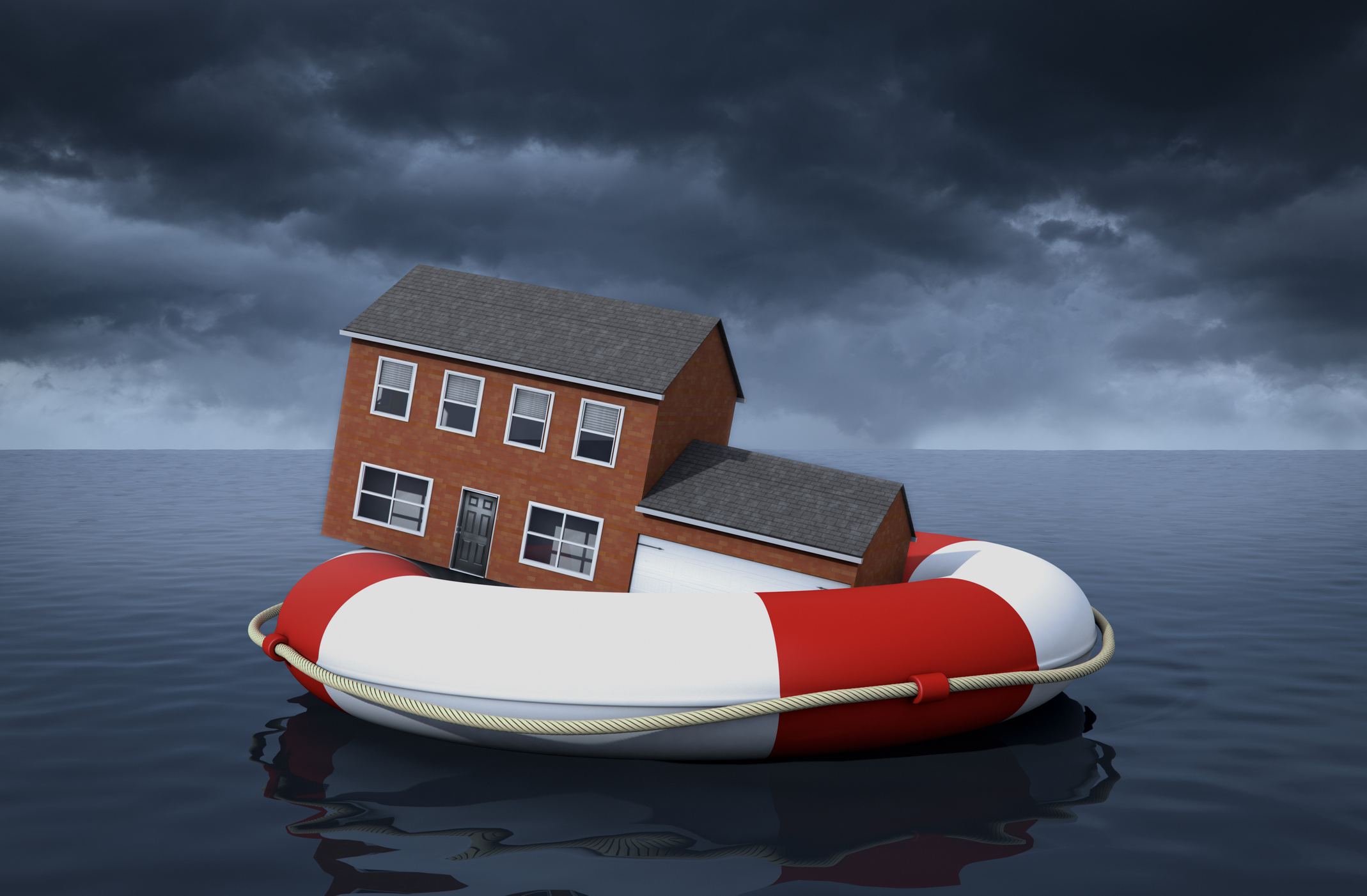How a Home Equity Line of Credit (HELOC) Works
You can use home equity to pay off high-interest debt or improve your home, but it’s important to understand the risks.


If you’ve owned your home for a while, odds are you are sitting on a lot of home equity. At the end of the third quarter of 2024, the average homeowner with a mortgage had $319,000 of equity in their home, according to Intercontinental Exchange (ICE), a technology and data provider. Of that amount, an average of $207,000 was “tappable” — the amount lenders will allow a homeowner to borrow while maintaining a 20% equity stake in their home.
With a home equity loan or a home equity line of credit (HELOC), you can draw on your equity for just about anything — to fund your business, pay off high-rate debt or update your home, to name a few. And because home equity loans and HELOCs are secured by your home, they typically come with lower interest rates than credit cards or personal loans.
But before you pull the trigger, it’s smart to evaluate your options — and to be aware of the risks that come with borrowing against your home’s value.

Sign up for Kiplinger’s Free E-Newsletters
Profit and prosper with the best of expert advice on investing, taxes, retirement, personal finance and more - straight to your e-mail.
Profit and prosper with the best of expert advice - straight to your e-mail.
How a HELOC works
Home equity loans provide a single lump-sum disbursement, typically at a fixed rate that recently averaged 8.4%, according to Bankrate. In most cases, you start making monthly payments to repay principal and interest on the loan right away, and the repayment period can range anywhere from five to 30 years.
A HELOC is a revolving line of credit, so you can borrow and repay funds as you need them. HELOC interest rates are typically variable and tied to the prime rate, which changes in tandem with the Federal Reserve’s target federal funds rate.
After cutting short-term interest rates by a quarter of a percentage point in December — marking the third rate cut in 2024 — the Fed signaled that it expected to make two quarter-point rate cuts in 2025. However, the Fed paused its rate-hiking campaign at the January meeting, amid ongoing inflationary pressure, throwing into question the likelihood of further rate cuts this year.
While rates for HELOCs recently averaged 8.5% — slightly higher than those for home equity loans — those rates are expected to decline to 7.25% by the end of 2025, compared with 7.9% for home equity loans, according to a forecast from Bankrate. If you have a good credit score (usually 740 or above), that will help you qualify for the lowest rates.
With a HELOC, you can borrow from your home equity during the draw period, which typically lasts for about 10 years but can be longer or shorter. During the draw period, you may be able to make interest-only payments on the amount that you borrow. If you want to reduce the balance more quickly, you can pay the principal at any time or agree with the lender to make a minimum principal payment — typically 1% to 2% of the balance — during the draw period.
You can use a check, a credit or debit card connected to the account, or an electronic transfer to access funds from your HELOC. If you owe money on the HELOC at the end of the draw period, you’ll enter a repayment period — typically up to 20 years — during which you’ll pay principal and interest at prevailing rates. Payments are usually made monthly, amortized to retire the debt by the end of the repayment period.
Whether a line of credit or a loan better suits your needs depends on how you plan to use the money and your comfort level with the structure of the loan or credit line. If you’re concerned that interest rates may rise again in the future — which could happen if high inflation returns — or you want a one-time disbursement, you may prefer a home equity loan. If you want to have continuing access to funds over the course of several years or would like to have more-flexible repayment options, a HELOC may be the better choice.
Any co-owner of the home, such as your spouse or partner, will be required to sign off on a HELOC or a home equity loan. That’s true even if you’re the sole earner in your household, because your shared home is collateral for the loan or line of credit. Late payments, defaults or a foreclosure will negatively impact both owners’ credit.
Popular uses for a HELOC
Debt consolidation is one of the most common reasons homeowners take out a HELOC or home equity loan. Borrowing against your home may look especially attractive to refinance high-rate credit card debt; credit card rates recently averaged about 20%, according to Bankrate.
But it’s important to understand the risks of using debt that’s secured by your home to pay off unsecured debt, says Ted Rossman, senior industry analyst for Bankrate. If you struggle to keep up with expenses — a common reason people get into credit card debt in the first place — you may also struggle to pay off your HELOC or home equity loan, Rossman says. If that happens, the lender could take possession of the property and require you to vacate your home.
Most HELOCs come with a “curtailment clause,” which allows lenders to cut off access to the line of credit if they detect a significant change in your financial situation or the value of your home.
In addition, borrowing against your home could be more expensive than some other strategies you could use to pay off high-interest debt. Depending on the amount you borrow, your lender may require you to get an appraisal, which can cost anywhere from a few hundred dollars to a few thousand dollars. Closing costs for a HELOC may run anywhere from 2% to 5% of the loan amount, but some lenders will waive the fees if you keep the credit line open for three years or more. Lenders also usually charge an origination fee of about 1% of the loan amount or credit line. However, if the amount you’re borrowing is small, you may be able to get some fees waived.
Transferring high-rate credit card debt to a card with a low introductory interest rate on balance transfers is less costly and won’t put your home at risk. If you have good credit, you can probably get a 0% rate for 18 to 21 months, Rossman says. You usually have to pay a balance-transfer fee, typically 3% to 5% of the amount you transfer.
The Citi Double Cash Card, for example, offers a 0% rate for up to 18 months with a 3% fee if you complete the transfer in four months. Chase Freedom Unlimited offers a 0% APR for up to 15 months with a fee of 3% if you complete the transfer in 60 days.
A balance transfer makes sense only if you can pay off the balance in full before the 0% rate expires. After that, you’ll likely be charged a much higher variable interest rate on any remaining balance. If a balance transfer isn’t a good option, consider contacting a nonprofit credit counselor. Many of them offer debt-management plans with interest rates of 7% to 8% over four or five years, which may even be less costly than a HELOC. Visit the National Foundation for Credit Counseling to find a certified credit counseling agency near you.
Home-improvement projects are another popular reason that homeowners tap their equity. Using a HELOC or home equity loan to pay for a project that will enhance your home’s value, such as remodelling your kitchen or renovating bathrooms, is less risky than paying off unsecured debt with the funds.
And if you itemize deductions on your tax return, the interest you pay on home equity that is used to buy, build or improve your primary residence or qualified second residence is tax-deductible, up to certain limits; you can deduct interest paid on combined mortgage and home equity debt of up to $750,000 if single, or married filing jointly, or $375,000 if married filing separately. If you move before the loan is repaid, proceeds from the home sale could be used to pay off the loan.
Other HELOC possibilities
Some homeowners use their home equity to finance the purchase of a second home. This strategy is especially popular with people who plan to sell their primary residence eventually and move into their second home. If you sell your primary residence before the draw period ends on a HELOC, you could then use the proceeds to repay the line of credit in full.
Home equity can also help you fund business expenses. Interest rates for a HELOC or home equity loan are usually lower than those for a business loan or line of credit because unsecured debt tends to have higher rates than debt secured by collateral. You’ll also have more time to repay the loan than generally permitted by traditional business loans.
Although you won’t be required to lay out a detailed business plan when you apply for a HELOC or home equity loan, as you would for a business loan, it’s still a good idea to have one in place. And if your business fails, you’ll put your home at risk if you can’t keep up with payments, so it’s best to limit home equity borrowing and to have a strategy for making payments regardless of whether your business survives.
Finally, some parents use home equity to help pay for a child’s college education. Home equity loans and HELOCs may offer lower rates than Parent PLUS loans, which currently have a fixed rate of 9.08%, and private student loans, some of which come with rates as high as 15% or more, depending on the borrower’s credit.
However, before tapping home equity, families should max out on federal student loans, which have a fixed rate of 6.53% for loans disbursed from July 1, 2024, to June 30, 2025. They offer other benefits, too, such as a tax deduction for up to $2,500 in interest, income-based repayment plans and loan forgiveness for public service employees.
Using a HELOC as an emergency fund
Even if you don’t need access to your home equity right now, you might consider taking out a HELOC to serve as a source of emergency funds in the event of job loss —especially if you work in an industry that is prone to layoffs.
In addition to vetting your credit, lenders will take a close look your other debts and your income, which means you may not be able to qualify for a HELOC after you’ve lost your job. You can apply for a HELOC and leave the credit line untouched until you need it.
If you use a HELOC as an emergency fund, consider whether you’ll still be able to make monthly payments if your income is reduced after a job loss. For instance, if you borrow $50,000, an interest-only monthly payment would come to about $350. A HELOC isn’t a substitute for having at least three to six months’ worth of living expenses in a savings account, but it could be beneficial to have a credit line available as a backup.
Note: This item first appeared in Kiplinger Personal Finance Magazine, a monthly, trustworthy source of advice and guidance. Subscribe to help you make more money and keep more of the money you make here.
Related articles
Get Kiplinger Today newsletter — free
Profit and prosper with the best of Kiplinger's advice on investing, taxes, retirement, personal finance and much more. Delivered daily. Enter your email in the box and click Sign Me Up.

Emma Patch joined Kiplinger in 2020. She previously interned for Kiplinger's Retirement Report and before that, for a boutique investment firm in New York City. She served as editor-at-large and features editor for Middlebury College's student newspaper, The Campus. She specializes in travel, student debt and a number of other personal finance topics. Born in London, Emma grew up in Connecticut and now lives in Washington, D.C.
-
 6 Stunning Waterfront Homes for Sale Around the US
6 Stunning Waterfront Homes for Sale Around the USFrom private peninsulas to lakes, bayous and beyond, Kiplinger's "Listed" series brings you another selection of dream homes for sale on the waterfront.
By Charlotte Gorbold Published
-
 Six Reasons to Disinherit Someone and How to Do It
Six Reasons to Disinherit Someone and How to Do ItWhether you're navigating a second marriage, dealing with an estranged relative or leaving your assets to charity, there are reasons to disinherit someone. Here's how.
By Donna LeValley Published
-
 6 Luxury Waterfront Homes for Sale Around the US
6 Luxury Waterfront Homes for Sale Around the USFrom private peninsulas to lakes, bayous and beyond, Kiplinger's "Listed" series brings you another selection of dream homes for sale on the waterfront.
By Charlotte Gorbold Published
-
 How to Get Apple TV Plus for just $2.99
How to Get Apple TV Plus for just $2.99For a limited time, you can get three months of Apple TV Plus for just $2.99 per month. Here’s how to get the deal.
By Rachael Green Published
-
 Don’t Panic About the “Retail Blackout” – See Which Stores Are Closing (and Which Aren’t) for Easter 2025
Don’t Panic About the “Retail Blackout” – See Which Stores Are Closing (and Which Aren’t) for Easter 2025Dozens of major retailers are planning to close their doors on April 20. Find out which of your go-to stores are on the list.
By Rachael Green Published
-
 Home Insurance: How to Cut Costs Without Losing Coverage
Home Insurance: How to Cut Costs Without Losing CoverageNatural disasters are causing home insurance premiums to soar, but don't risk dropping your coverage completely when there are ways to keep costs down.
By Jared Elson, Investment Adviser Published
-
 Why Homeowners Insurance Has Gotten So Very Expensive
Why Homeowners Insurance Has Gotten So Very ExpensiveThe home insurance industry is seeing more frequent and bigger claims because of weather, wildfires and other natural disasters.
By Karl Susman, CPCU, LUTCF, CIC, CSFP, CFS, CPIA, AAI-M, PLCS Published
-
 Zelle App Shut Down? Why Zelle Has Discontinued Its App
Zelle App Shut Down? Why Zelle Has Discontinued Its AppWith the Zelle app shut down, learn how you can still use Zelle and which other mobile payment apps you might want to consider.
By Paige Cerulli Published
-
 Six Best Places to Live in Florida
Six Best Places to Live in FloridaPlaces to Live Florida offers a range of cities where you’re never far from the sound of lapping waves.
By Drew Limsky Published
-
 How to Lower Home Insurance Rates When Climate Change Increases Costs
How to Lower Home Insurance Rates When Climate Change Increases CostsA top insurer warns the damage climate change causes is making it cost-prohibitive for insurers in some areas. Learn how to protect your home and lower costs.
By Sean Jackson Published